Skip to the good bit
ToggleHi there! I’m Ryan, the Editor and Owner of Upbeat Geek. With a rich design and digital marketing background, I’ve navigated the rewarding yet challenging world of blogging. Blogging, to many, seems like a leisure pursuit. Yet, behind the scenes, it’s a blend of passion, strategy, and relentless dedication. Today, I’ll share my journey and guide you on how you, too, can transform your enthusiasm into a thriving blog and, eventually, a profitable business.
Starting your blog
Blogging is more than just an online journal or a place to express your thoughts. It’s a powerful platform for sharing your passion and connecting with like-minded individuals, and yes, it’s a viable business model.
Why blogging?

For me, the allure of blogging was the freedom it offered – freedom to create, express, and influence. It was about turning my passion for design and digital marketing into something tangible and valuable for others. Whether it’s music, pets, technology, food or literally anything, blogging gives your interests a stage, a spotlight, and an audience.
But blogging is not just about passion. It’s also about bridging gaps, offering solutions, and creating a community. It’s a testament to the idea that doing what you love can become a lucrative career, provided you’re ready to invest time, effort, and strategy.
Starting a blog might seem daunting, but with a clear roadmap, it’s surprisingly straightforward. Here’s how to get your blog off the ground in an hour.
1. Choose a blog domain name
Your domain name is your identity on the web. It should reflect your blog’s essence, be easy to spell, and be memorable. Try to make this a brand name, keeping it full of character and not something generic. Consider it your online address, a place people can visit to dive into your world. I bought my domain from Namecheap; however, you can use your hosting provider most of the time!
I created Upbeat Geek because it allows me to write about different topics; it’s to the point and has brand potential. The word upbeat was originally there for my idea of writing about music and vinyl; however, as I’ve broadened to include movies, tech and comics, the name still fits.
2. Choose a content management system (CMS)
Your blogging platform is your foundation. Platforms like WordPress, Blogger, and Wix offer a balance of ease of use, customization, and scalability. When choosing your platform, consider factors like ease of use, cost, monetization opportunities, and SEO friendliness.
I personally would always recommend WordPress; it’s free, easy to use, and very customisable.
3. Choose a hosting provider
Think of hosting as renting space on the Internet to store your blog. A reliable host supports your blog’s growth and ensures it’s accessible around the clock. Look for a host with a free domain name, email address, and solid customer support.
I decided to go with DreamHost because they suit my needs and have great support. However, Cloudways is also a great provider.
4. Customize your site
Your blog’s theme is its outfit. It should represent your style and niche while being user-friendly and SEO-optimized. A good theme is like a good first impression – visitors want to stay and explore.
If you’re using WordPress, you can choose from a wide range of themes. However, I designed mine using Elementor.
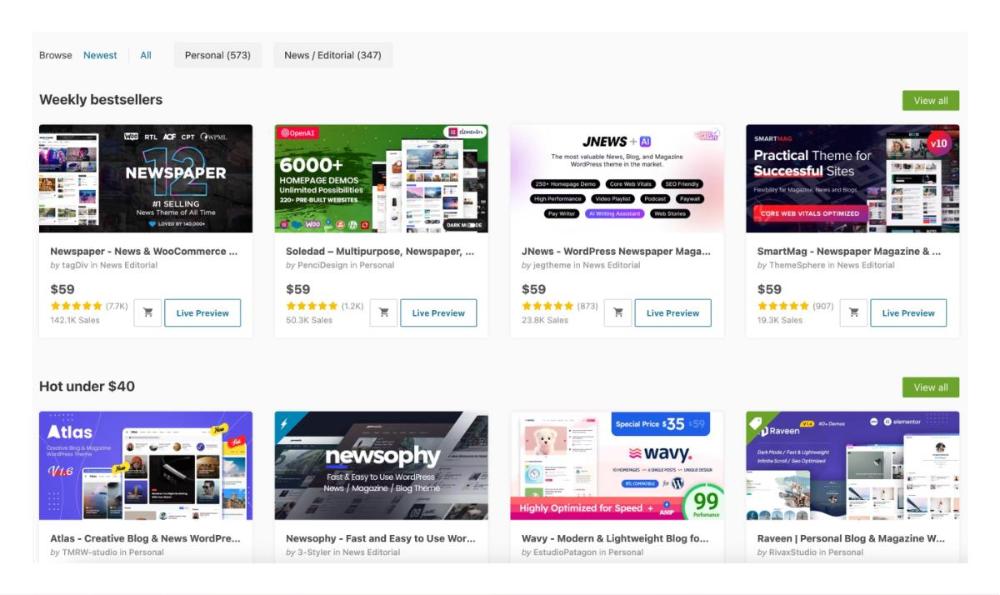
5. Start writing & publishing
Finally, the fun part is creating content. Decide on your topics and just start making content without overthinking it. Ensure the content is high-quality, of good length, and engaging. We’ll touch upon the content in the next part.
The key takeaway from this initial section is to avoid overthinking. Successful blogging is about persistence and patience; it’s a long-term endeavor. Instead of spending months deliberating over the perfect domain name or constantly redesigning your site, focus on producing content. Building momentum and gaining traction takes time; the best time to start is now.
Creating content that stands out
Creating a blog is one thing, but filling it with content that resonates, engages, and retains an audience is an art. The internet is awash with content, making it crucial for your posts to stand out. How do you achieve this? Through meticulous planning, strategic execution, and a touch of creativity.
Conduct keyword research
Before you start typing, your journey to compelling content begins with keyword research. This foundational step ensures your blog attracts visitors and speaks to them in a language they understand and are actively searching for. You can either use SEO tools, search around Google or come up with the topics yourself, but ensure you consider the following:
| High search volumes | Target keywords with high search volumes to tap into existing demand. Tools like Google Keyword Planner or Ahrefs can help you identify these golden opportunities. |
| Informational keywords | These are the queries your target audience types into search engines when they’re seeking information. By answering these questions, you position your blog as a helpful resource, building trust and authority in your niche. Use tools like Answer The Public and AlsoAsked. |
| Topic clusters | Organize your content into clusters that revolve around a central theme, linked by internal links. This helps with SEO and ensures your readers find all the information they need within your blog, making it a go-to hub for your niche. |
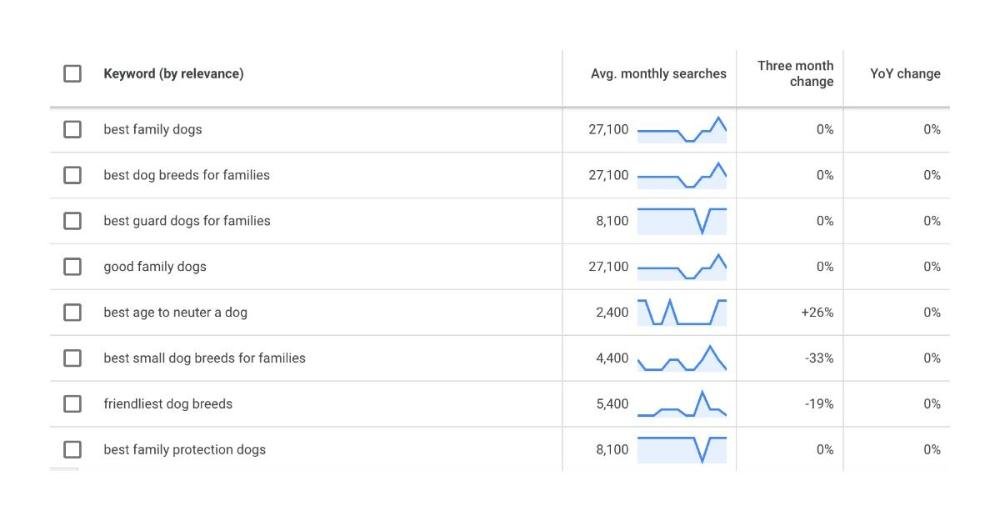
Tips for writing content that readers want
1. Focus on quality over quantity
It’s better to publish one well-researched, comprehensive post than ten shallow ones. Depth attracts both search engines and real readers. However, I recommend a minimum of 750 words per article to cover enough detail. I would also recommend looking into E-E-A-T and YMYL if you really want to focus on the quality of your content.
In short, E-E-A-T stands for Experience, Expertise, Authoritativeness, and Trustworthiness, so ensure you have an authoritative and experienced author and about pages. YMYL, which stands for Your Money Your Life, means you should consider how your content affects a person’s happiness, health and financial stability.
2. Understand your audience
Tailor your content to meet the needs and interests of your readers. Once you have some data, use tools like Google Analytics and social media insights to get to know your audience better. If you’re starting out, however, take a look at the competition—see what ranks well in Google and start there!
3. Make your content skimmable
Use subheadings, bullet points, and short paragraphs to make your content easy on the eyes. The easier it is to read, the longer people will stay (technically).
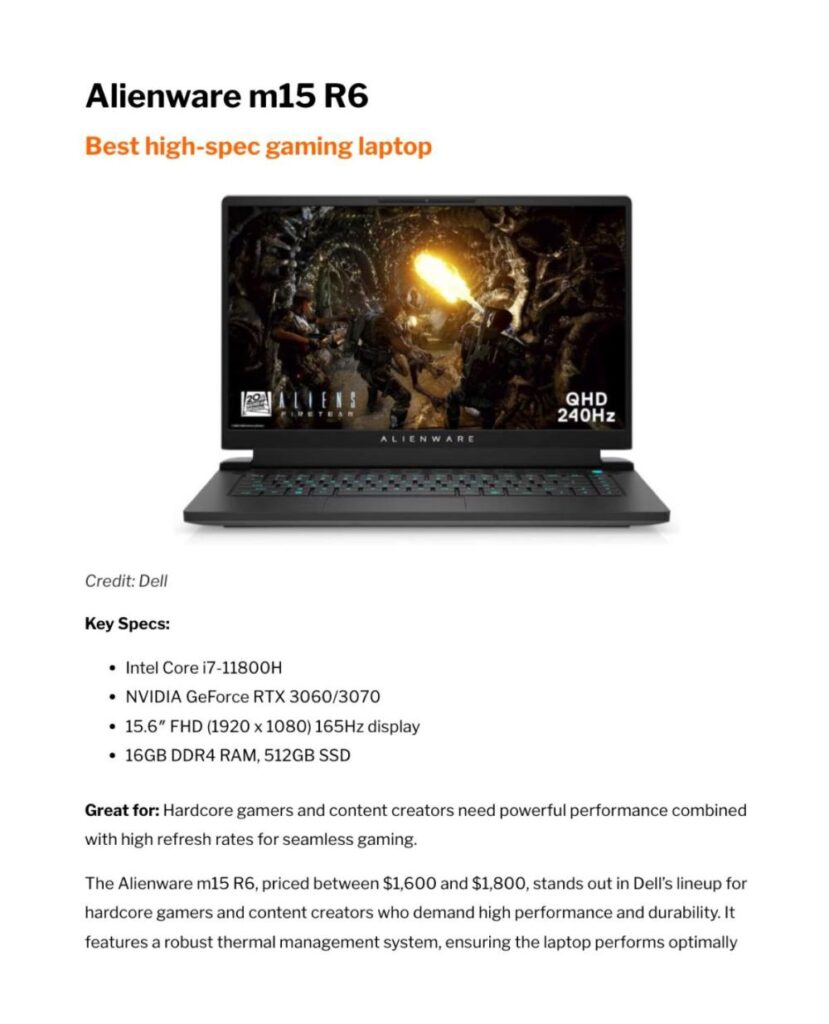
4. Incorporate imagery and video
Break up text with relevant images, infographics, and videos. Visual content enhances engagement and makes complex topics easier to understand. I often use Unsplash and Pexels for free images whilst crediting all images I use for my movie, comic and music-related content.
5. Optimize for SEO
Use keywords throughout your content, including titles, headers, and meta descriptions. Remember, SEO is about being found by the right people, not just about ranking for the sake of it. I will cover onsite optimisation more later in this article. However, I recommend using the Detailed Chrome extension to pull up any title, meta and headings you need to double-check!
6. Keep updated with trends & news
Stay informed about the latest trends in your niche to keep your content fresh and relevant. To support your blog, it’s important to push out evergreen content and focus on topical content.
7. Recycle & refresh content
Turn your blog posts into podcasts, videos, infographics, or social media posts. This expands your reach without creating new content from scratch. You can also expand and refresh content by adding FAQs, updated news and interesting points. This is something Google absolutely loves!
8. Monitor performance
Use analytics to track what’s working and what isn’t. This insight allows you to tweak your strategy for better results. You can use CMS plugins like Wix’s analytics, MonsterInsights for WordPress, or Google Search Console and Google Analytics (GA4), like I do.
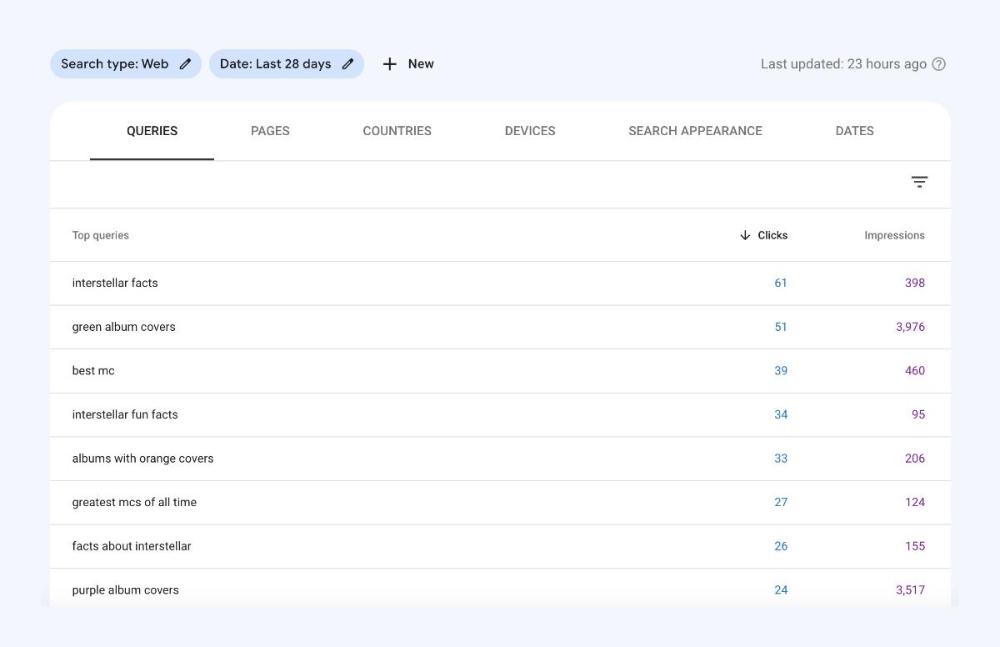
9. Capitalize on what works well
This technique helped me get my blog to over 12,000 page views (and growing) monthly.
As you monitor performance, you find the content that drives traffic, engages well and ranks. Take these concepts and repeat them. Let’s take my ’60s artist post, for example; this is something I pushed out because I love the music from the 1960s. This started to drive traffic and rank well, so I repeated this content style for the ’50s, ’70s, ’80s, ’90s and 2000s. The results have been as expected, with crazy growth in every single post.
Another similar technique would be for my ‘best movie directors‘ article, which started gaining traction. So I decided to support this: I’ll create a top 10 list of movies for each director in this list, such as Nolan, Tarantino, and so on. This is called cluster content, which is something I highly recommend. Not only does it keep you on track with relevance, but it allows for internal linking and supporting other content. If your audience and Google like it, then repeat!
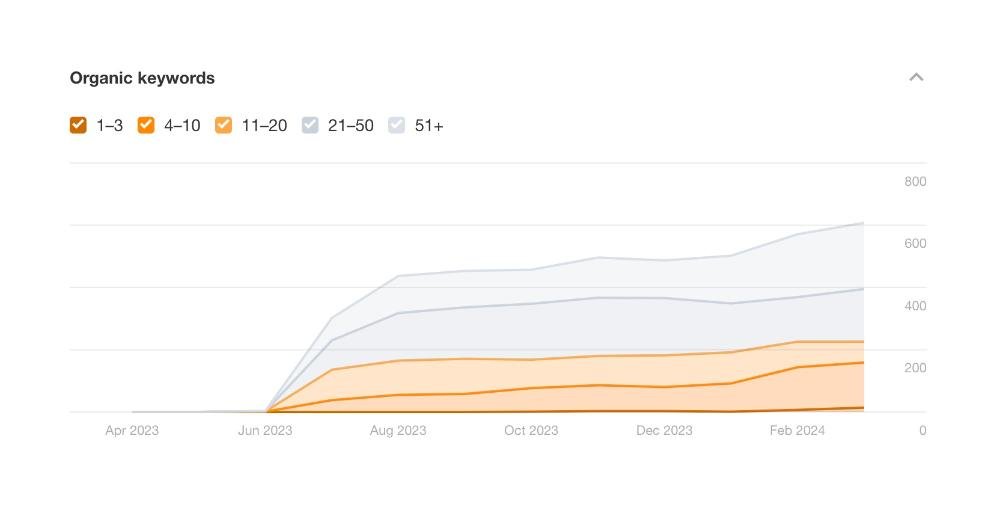
Crafting standout content is both a science and an art, combining strategic keyword research with creative execution. Focusing on quality, relevance, and engagement will attract readers to your blog and turn them loyal followers. Stay tuned for insights on monetizing your passion and turning your blog into a thriving business.
Growing your blog
Once you’ve laid the groundwork with compelling content, the next step is to amplify your blog’s reach. Attracting readers in today’s digital landscape requires more than just publishing; it involves strategic efforts in SEO and building a robust network. Here’s how you can extend your blog’s visibility beyond the confines of your existing audience.

Tips for driving traffic
We touched upon it briefly in the content section, and SEO (Search Engine Optimization) is your best friend in the digital realm. It’s about more than just keywords; it’s about optimizing your entire online presence to rank higher in search engine results, increasing your visibility and traffic. Here are some tips to help your site drive organic traffic:
1. Optimize for user intent
Understand what your audience is searching for and why. Tailor your content to meet those needs and answer their questions comprehensively, which we have already covered. But it’s key to a strong SEO strategy.
2. Mobile optimization
With most searches now on mobile, ensure your blog is mobile-friendly. This affects both user experience and search engine rankings. For example, my site has 75% mobile users.
3. Speed matters
A fast-loading blog is crucial for keeping visitors engaged. Optimize images and leverage caching to improve your site’s loading times. Every image I upload has been through a bulk resizer and a bulk image cropper, which keeps images consistent and compressed. I also use WordPress plugins such as NitroPack and Cloudflare to optimize the speed of my blog.
4. Secure your site
Use HTTPS to protect your visitors and enhance your site’s trustworthiness in the eyes of both users and search engines. This is usually covered in your hosting or domain purchase setup. I use Cloudflare to set up my SSL for free!
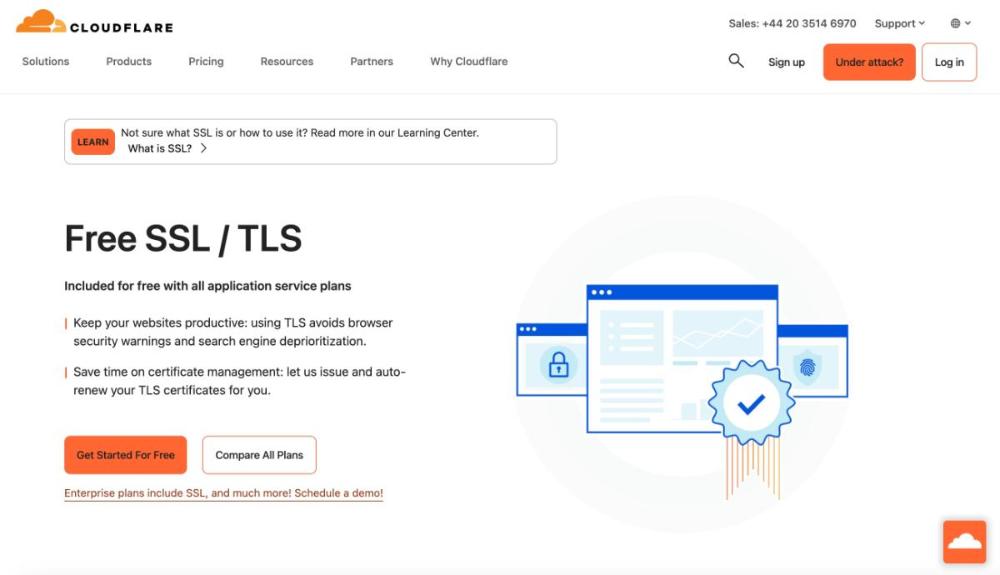
5. Use structured data
Help search engines understand your content better by using schema markup. This can enhance your appearance in search results with rich snippets. You can set your posts for article schema, mark up your frequently asked questions and much more. I use RankMath to organise my schema.
6. Onsite optimisation
On-site optimization is key. Utilize RankMath or Yoast SEO to craft effective title tags and meta descriptions for each post. Incorporate headings, structured data, and internal links to boost SEO. I use LinkWhisper to help with internal link suggestions. You should also naturally sprinkle relevant keywords throughout your content to enhance visibility and engagement. This concise approach elevates your blog’s search engine potential significantly.
Backlinks
Whilst backlinks could be covered in our brief list above, I wanted to cover this in a section of it’s own. The reason is that people forget the importance of backlink building. It’s almost like trying to get a car going without any fuel.
Backlinks are links from other websites that lead to your site. They’re crucial for SEO because they act like votes of confidence, signalling to search engines that others vouch for your content. This can improve your site’s credibility and ranking, making it more visible to potential visitors. Here are some ways you can build links to your new blog:
1. Expert comments
Share your expertise on other platforms and in the media by providing expert comments on relevant topics. This builds your credibility and exposes your blog to a wider audience. You can use tools like ResponseSource and HARO or speak to PR professionals who can connect you with journalists. If you want to go a step further, you can create press releases to pitch to journalists. However, this is a whole topic in itself!
I’ve received links from The Sun, USnews, Bustle, and much more from providing comments to journalists on topics on which I am an expert.

2. Guest blogging
Write for other blogs in your niche to tap into their audience. We have a write for us page that allows great content writers to feature on our site. Likewise, invite others to guest blog on your site. This reciprocal relationship benefits both parties by expanding reach and enhancing credibility. When I find a site I like, I contact them and create a piece for their blog. This can sometimes come at a cost, but it’s worth it when the site has a good domain rating and traffic strength, which you can check for free with tools like Moz and SmallSEOtools.
I’ve received links in relevant blogs such as FilmDaily and Good Men Project.
3. Natural links
Natural links are earned without any direct action from the site owner, stemming from the genuine value and appeal of the content. They’re given freely by others who reference your work in their content, signifying high quality and relevance. Search engines highly value such links, enhancing your site’s authority and SEO performance.
I’ve gained a few links from expert comments, such as those in Techbullion.
4. Feature experts
Lastly, you can feature other bloggers, experts and websites in your articles. You’ll be surprised; people love being featured in content. This won’t work every time, but they can link to your blog once you’ve mentioned them.
Expanding your blog’s reach is a multifaceted endeavor beyond mere content creation. It requires a combination of SEO savvy, strategic networking, and leveraging various digital platforms to enhance your visibility. By employing these tactics, you’re not just reaching more readers; you’re building a community around your blog and establishing yourself as an authority in your niche. Stay tuned for more insights on engaging your newfound audience and converting their interest into action.
Monetize your blog
Once you’ve established a readership and started to expand your reach, it’s natural to think about how you can monetize your blog. After all, if you’re putting in the effort to create content and build an audience, why not make it financially rewarding? Let’s explore how you can turn your blogging passion into profit.
Different ways to monetize your blog
The digital landscape offers myriad ways to generate income from your blog. Here are some of the most effective strategies:
Ad platforms
One of the simplest ways to earn money is by displaying ads on your site. Platforms like Google AdSense, Monumetric and Raptive can match your blog with relevant ads; you earn money based on views or clicks. While this method is easy, it requires significant traffic to be lucrative.
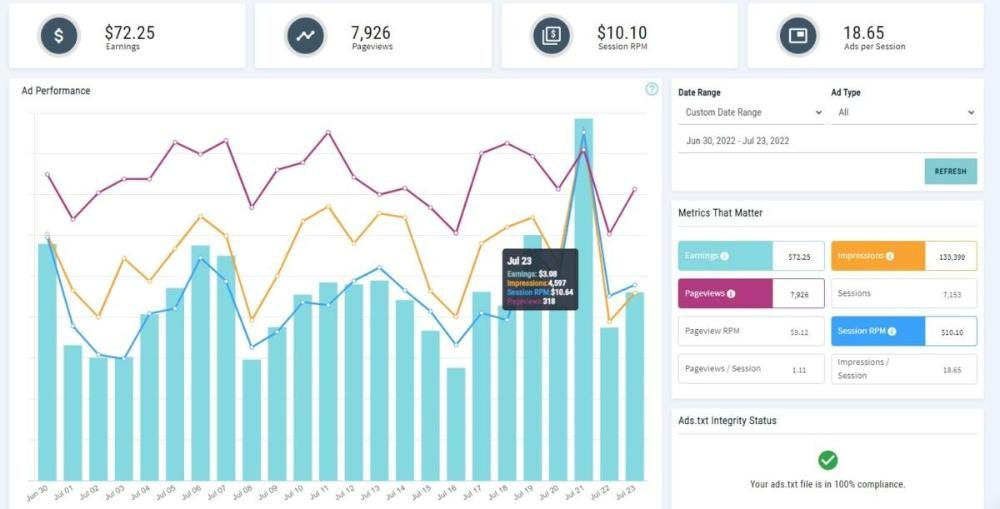
Affiliate marketing
This involves promoting products or services through your blog and earning a commission for every sale made through your referral. To maintain authenticity and trust with your audience, join affiliate programs like Amazon, eBay, and others that align with your niche.
Sponsored content
Companies always seek influential bloggers to create content around their products or services. These sponsorships can be lucrative, but disclosing such partnerships to your readers and promoting products you genuinely endorse is essential.
E-commerce
Dropshipping allows you to sell products without inventory, partnering with suppliers who ship directly to customers, offering a low-risk entry into e-commerce. Alternatively, selling branded merchandise, e-books, courses, or digital downloads through your blog, with platforms like Shopify or WooCommerce, can create a seamless shopping experience. Additionally, offering consulting services, coaching, or online courses leverages your expertise for monetization and enhances your authority in your niche.
Monetizing your blog is a journey that requires patience, experimentation, and a deep understanding of your audience. By diversifying your income streams and providing value to your readers, you can turn your blog into a profitable endeavor that fuels your passion and supports your financial goals. Stay tuned for strategies for engaging with your audience and fostering a community around your blog.

Signing off
As we wrap up this comprehensive guide to starting, growing, and monetizing your blog, it’s clear that blogging is much more than a mere digital pastime. I have only scratched the surface here. I would highly recommend really diving deep into every topic I’ve covered here today.
It’s a dynamic journey that blends passion with perseverance, creativity with strategy, and individuality with community. The path is dotted with challenges, from the daunting task of standing out in a sea of content to the intricacies of SEO and monetization strategies. However, the rewards, both tangible and intangible, make every obstacle worth navigating.
If you have any questions about growing your blog, I’d love to help, so feel free to email me 🙂






